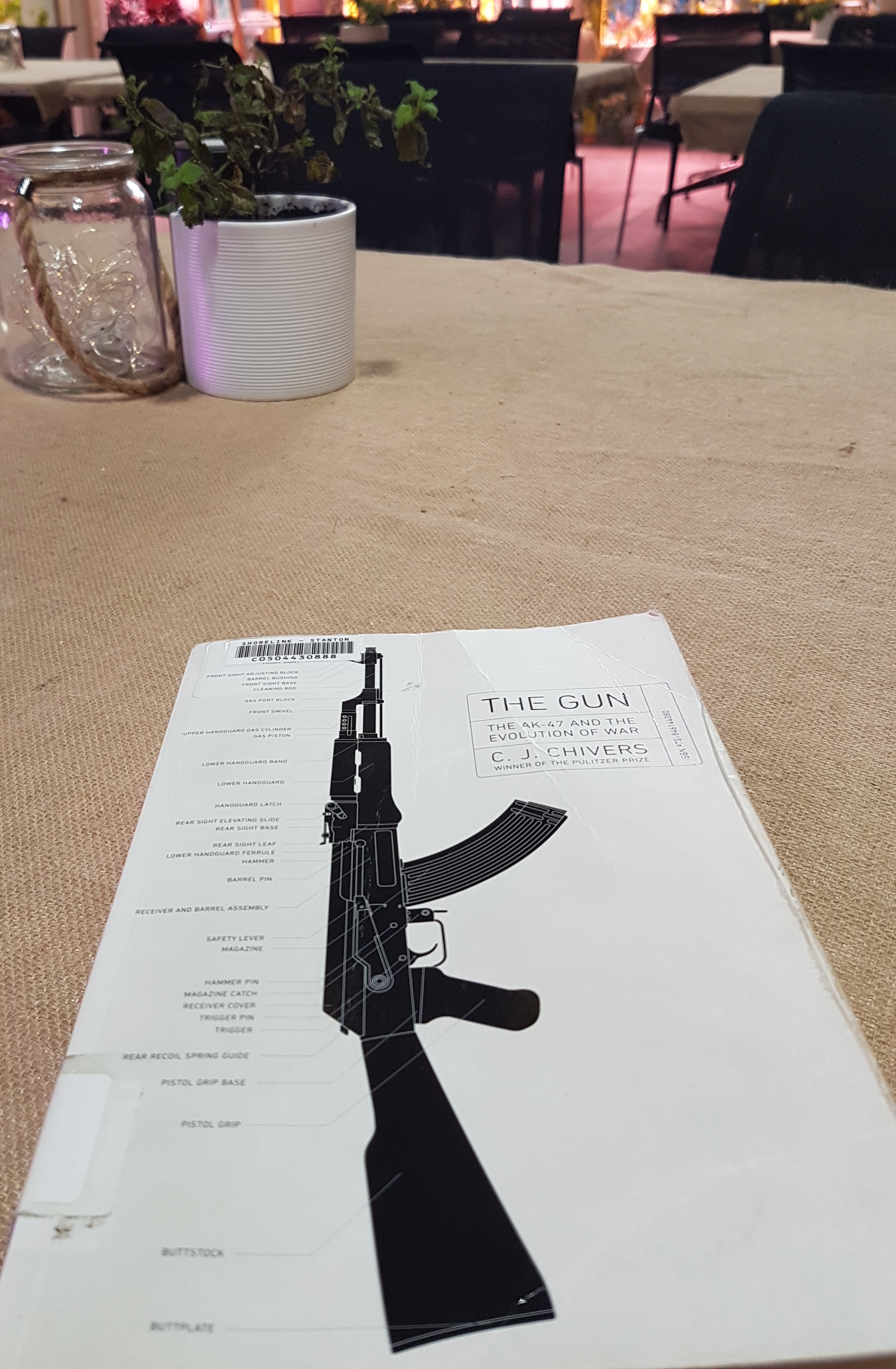The Gun: The AK-47 and the evolution of war
C.J. Chivers, 2010

This book explores the political and economic conditions that gave rise to the assault rifle - with a focus on the AK-47 - and how assault rifles have shaped war and security around the world since the end of the cold war.
It starts off with a short history of automatic weapons - starting from the earliest ones like the Gatling gun - and its effective use by colonisers to 'civilize' the 'savages' by killing them, and then on to the Maxim - a much more reliable and efficient killing machine, and so on to the German WWII STG-45 and finally on to the AK-47. The pages of modern warfare abound with war profiteers, arms dealers, kings, and governments bent on domination.
The AK-47 is not the pinnacle of firearm design - it is however, a very effective compromise in the field of weapon design, a field where every decision has its tradeoffs. For example, making a weapon more powerful also makes it heavier and more expensive to manufacture (since it needs more metal) and maintain, but making it too light means it is no longer effective.
The AK-47 made a very good set of choices - for example, its parts are large and loose fitting rather than snug - making them less likely to jam when dirty, inadequately lubricated, or clogged with carbon or dirt. The larger parts are also easier to clean and make the weapon easier to take apart and put back together in the field with less equipment. A weapon so simple and easy to maintain and use even a child could do it - as they often do.
This was counter-intuitive to western designs, which used precision tools to make parts with tight tolerances, which were very prone to jamming when exposed to dust or if not properly lubricated - a problem so bad that during the Vietnam war American soldiers preferred to use captured AK-47s to their own M-16 rifles.
At the end of the cold war, stockpiled AK-47s found their way onto the open market. And because of their simple engineering and their ability to withstand rust, even many of the earliest produced rifles from the 1940s are still in excellent working order today in 2019 - meaning the problem of assault rifle proliferation will be a problem well into the next few decades.
While the AK-47 is the most famous Russian export, the biggest seller of AK-47s in the world remains the United States of America, with the UK, France, Russia, and China close behind (and these are also the five permanent members of the UN security council).
The book is very well researched and well written and I found it an easy read. It is engaging and very accessible, and does not bore the reader with historical minutiae or complex technical discussions about assault weapons. Anyone who wonders about why the world is the way it is would enjoy this book.